#Federal Art Project mural
Text

This is a fresco mural entitled "The New Deal," by Conrad Albrizio, depicting various phases of that program. It was unveiled in the auditorium of the Leonardo Da Vinci Art School on January 24, 1935. President Franklin D. Roosevelt, architect of the New Deal, is standing in the center.
Photo: Associated Press
#vintage New York#1930s#Conrad Albrizio#mural#Federal Art Project#New Deal#FDR#Jan. 24#24 Jan.#fresco#Great Depression#Federal Art Project mural
62 notes
·
View notes
Text
Charles Alston: A Luminary of the Harlem Renaissance and Beyond
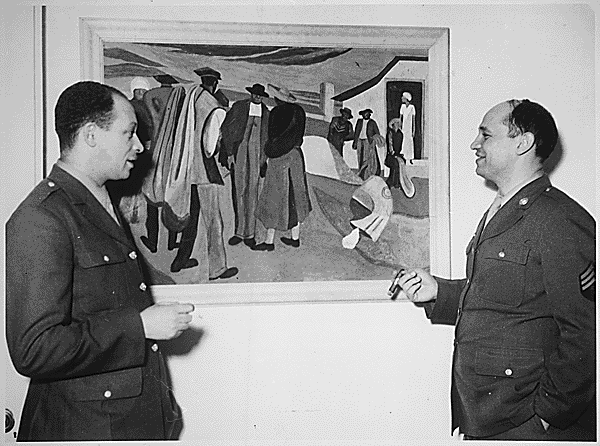
In the heart of the Harlem Renaissance of the 1920s and 1930s, Charles Alston emerged as a beacon of creativity and activism, blending the vibrancy of African American culture with profound social commentary. As a pioneering African American artist and educator, Alston’s legacy is celebrated for its dynamic impact on Black art and cultural expression during the 20th century. His work, which includes murals, illustrations, and sculptures, showcased his contributions to the Harlem Renaissance and his role in uplifting African American heroes through art.


Alston’s murals, commissioned by the Federal Art Project of the New Deal-era Works Progress Administration, adorned public spaces, bringing the narratives of the African American experience to a broader audience. His role during World War II, creating illustrations for the Office of War Information, further exemplified his commitment to using art as a tool for advocacy.


These illustrations, many of which are preserved in the National Archives, underscored the contributions of African Americans to the war effort, challenging the racial prejudices of the era. Alston also designed and painted murals at the Harlem Hospital and the Golden State Mutual Life Insurance Building. In 1990, Alston's bust of Martin Luther King Jr. became the first image of an African American displayed at the White House.
Beyond his artistic endeavors, Alston’s mentorship of future luminaries like Romare Bearden highlight his dedication to nurturing the next generation of artists. This mentorship underscored his belief in art’s power to foster community, inspire change, and bridge cultural divides in the United States. His influence extended to the civil rights movement, where his art continued to serve as a catalyst for social justice.

Charles Alston’s work remains a testament to his visionary blend of art and activism. For those interested in exploring Alston’s enduring impact and the rich tapestry of the Harlem Renaissance, the National Archives offers a treasure trove of resources:
Fully Digitized Artworks: https://catalog.archives.gov/search?availableOnline=true&page=2&q=Charles%20Alston&typeOfMaterials=Photographs%20and%20other%20Graphic%20Materials
https://catalog.archives.gov/search?availableOnline=true&page=2&q=Charles%20Alston&typeOfMaterials=Photographs%20and%20other%20Graphic%20Materials
85 notes
·
View notes
Text

New York World’s Fair 1939 - Philip Guston roughing out his mural commissioned by the WPA Federal Art Project
13 notes
·
View notes
Text

Georgette Seabrooke (aka Georgette Seabrooke Powell; August 2, 1916 – December 27, 2011) was a muralist, artist, illustrator, art therapist, non-profit chief executive, and educator. She is known for her 1936 mural, Recreation in Harlem at Harlem Hospital, which was restored and put on public display in 2012 after being hidden from view for many years.
She was born in Charleston, South Carolina, the only child of George and Anna Seabrooke. Her family moved to New York City in 1920. George, a restaurant and hotel owner. Her mother was a domestic housekeeper. She studied at the Harlem Art Workshop.
She was admitted to the prestigious Cooper Union School of Art in New York, where she received the school’s Silver Medal, its highest honor, for a painting entitled “Church Scene.” She had been painting and drawing images of “Black American lifestyles and African symbolism”. Cooper Union denied her her diploma for what it said at the time was incomplete work, it invited her back to honor her achievements. She was presented with a lifetime achievement award, the school considers her a member of its class of 1937.
She was chosen by the Federal Art Project of the Works Progress Administration as one of four “master artists” to paint murals at Harlem Hospital. She received a WPA commission to paint a mural at Queens General Hospital.
She married Dr. George Wesley Powell (1939-1959). They had three children. She illustrated calendars and magazines and she studied theater design at Fordham University.
She founded Operation Heritage Art Center. She became a registered art therapist, she earned her BFA from Howard University She was very active in combining art with mental health therapy, teaching at a series of events known as “Art in the Park”. She painted a series of portraits of homeless men and women which emphasized their plight. She traveled to Lagos to represent the US at the Second World Black and African Festival of Arts and Culture.
Her work appeared in 72 major exhibitions (1933-2003) in the US, Senegal, Venezuela, and Nigeria. #africanhistory365 #africanexcellence
5 notes
·
View notes
Text

Aaron Douglas, Into Bondage, 1936, oil/canvas (National Gallery of Art, Washington D.C.)
In 1936, Douglas was commissioned to create a series of murals for the Texas Centennial Exposition in Dallas. Installed in the elegant entrance lobby of the Hall of Negro Life, his four paintings charted the journey of African Americans from slavery to the present. Considered a leader of the Harlem Renaissance, the cultural phenomenon that promoted African and African American culture as a source of pride and inspiration, Douglas was an inspiring choice for the project.
The Hall of Negro Life, which opened on Juneteenth (June 19), a holiday celebrating the end of slavery, was visited by more than 400,000 fairgoers over the course of the five months that the Exposition was open to the public. This commemoration of abolition, and the mural cycle in particular, served as a critical acknowledgment of African American contribution to state and federal progress. Unfortunately, of the four original paintings only two, Into Bondage and Aspiration (Fine Arts Museums of San Francisco), remain.
11 notes
·
View notes
Text
Nacogdoches is one of dozens of Texas cities that have planted pollinator gardens, providing way stations for the long monarch migration
Take the people of Nacogdoches. Billed as the “Garden Capital of Texas,” the town of 35,000 has long promoted beautification efforts, including projects with the local Stephen F. Austin (SFA) Gardens. Nacogdoches recently went a step further, joining more than 600 cities nationwide in taking the National Wildlife Federation’s Mayors’ Monarch Pledge. By signing on, leaders commit to expanding monarch habitat and educating residents about pollinators.
In making their improbable journey, monarchs need all the help they can get. East of the Rocky Mountains, the butterflies head south at the end of summer and, after overwintering in central Mexico from late October to March, begin their long return north. Milkweed, essential for monarchs, and other nectar-producing plants serve as way stations, providing nutrients and shelter en route.
Much of the monarch’s decline in recent decades can be linked to the disappearance of these way stations, often due to development. By designing and planting a series of pollinator-friendly gardens beginning in 2019, Nacogdoches became a champion of monarchs and other pollinators, sending a message of hope for many migrating species.
That positivity extends to the human population. “The four monarch gardens in Nacogdoches provided opportunities for a diverse group of people to learn about and plant these pockets of conservation,” says Dawn Stover, representative for SFA Gardens at the time of installation. “We had generations of gardeners making these projects come to life.”
Selecting native flora not only helps pollinators. It also educates home gardeners who might have overlooked certain plant species. “As people watch early-blooming penstemons give way to summer wild bergamot and giant cornflower, then transition to fall with goldenrod and asters, they become enchanted with the living world,” says Kim Conrow, past president of the Native Plant Society of Texas.
The Nacogdoches gardens—each registered as a Certified Wildlife Habitat®—were the result of an effort between the city’s Parks & Recreation Department, NWF’s Monarch Conservation Urban Outreach and Monarch Stewards programs, SFA Gardens and the Native Plant Society of Texas, with a donation by the James A. “Buddy” Davidson Charitable Foundation. “[These gardens] are a way for us to celebrate the great partnership and collaboration with the communities to support monarch migration,” says Rebeca Quiñonez-Piñón, climate-resilient habitats senior manager and monarch recovery strategist for NWF.
Nacogdoches is among dozens of Texas cities that have taken the NWF pledge—currently the second most of any state. Others include the Lower Rio Grande Valley city of McAllen, where the renowned Zapotec artist Irving Cano’s mural “Destino Monarca” was installed in 2022.
Both the mural and the gardens are “conduits helping us to raise awareness about the situation of the monarch butterfly but at the same time increase native habitat in urban areas while we educate others,” Quiñonez-Piñón says. “We can see the demonstration gardens as creating art, too.”
32 notes
·
View notes
Text

The Vision - Joseph Vogel, 1939. (The Met)
"Vogel worked for the Graphic Arts Division of the Federal Art Project, a New Deal initiative that put artists to work during the Great Depression. The Division’s New York workshop fostered a vibrant community of leftist printmakers. There, Vogel created Vision, a Surrealist montage of abstracted figures that conveys the horrors of an impending world war. A prophetic figure at left faces figures, including a horse, whose ribcages are exposed; at right, a figure hangs from a noose. Vogel made Vision after returning from Spain, where he had moved for a brief period to support the Popular Front during the Spanish Civil War. While in Spain, Vogel saw Picasso’s mural Guernica (1937), whose blend of abstract style and political subject matter made a profound impact on the artist."
6 notes
·
View notes
Text
Brazil’s First Favela Celebrates 125th Anniversary With Celebratory Breakfast and Discussion Among Elders

On Saturday November 16, the Providência Gallery Project—founded in 2017 and located in the Leonel de Moura Brizola Popular Market—organized a breakfast to celebrate the 125th anniversary of Brazil’s first favela, originally called Morro da Favela and now known as Morro da Providência. The project carries out art interventions in the community, promoting cultural activity in the area through urban mural paintings and impactful local activities.
In 2022, Providência celebrates 125 years and continues to be an important symbol of the history of favelas. The first Brazilian favela is located near the Central do Brasil train station, behind the Eastern Military Command building. It is in the heart of Rio de Janeiro’s port region, in the Gamboa neighborhood.
Founded after the War of Canudos (1896-1897) by soldiers returning from the battlefields, Providência was initially called Morro da Favela, named after a spiny, resilient shrub native to Bahia’s hinterland where the war took place. After Antônio Conselheiro‘s defeat at the Canudos camp, the soldiers, primarily formerly enslaved Afro-Brazilians who survived the war, were promised land in Rio—the capital of Brazil at the time—as payment for their services. When they arrived in Rio de Janeiro, they occupied the area surrounding the Ministry of War in the federal capital’s center while waiting for the land they never received. With this, they occupied the hill behind the ministry and called it Morro da Favela in honor of the land where they had served battle.
Shortly after, all spontaneous occupations of this kind—which seek to guarantee the right to housing, reflect territories of resistance, and historically suffer neglect from the Brazilian State—became known as favelas. Today, favelas are found in all areas of Rio de Janeiro and in every Brazilian city.
To reinforce the historic importance of their favela and the central role of residents in these 125 years of struggle for the right housing, the Providência Gallery project organized a breakfast to celebrate the community’s 125th anniversary. The event involved residents, local leaders and partners engaging actively in a discussion circle, with the stories of residents highlighting feelings and experiences of living in the favela.
Continue reading.
56 notes
·
View notes
Text

[Image of Coit Tower painting of striking workers, taken while I was in San Francisco.]
LETTERS FROM AN AMERICAN
December 8, 2023
HEATHER COX RICHARDSON
DEC 9, 2023
You all are in trouble, because I am home tonight from ten weeks on the road and am taking the night for myself, writing about one of the Very Cool Things I learned in my travels. I expect there will be more stories along these lines in the next several weeks.
Ninety years ago today, on Friday, December 8, 1933, in the first year of President Franklin Delano Roosevelt’s administration, the Advisory Committee to the Treasury on Fine Arts met for four hours in Washington, D.C., with museum directors from all over the country and leaders from the art world. For the past nine months, the administration had been building a “New Deal” for the American people, using the government to help ordinary Americans in the midst of the Great Depression.
Together with the Democrats in Congress, the administration had launched the Civilian Conservation Corps that put young men to work planting trees, fighting fires, and maintaining wilderness trails. The Federal Emergency Relief Administration provided work and cash relief for unemployed workers; the Agricultural Adjustment Administration boosted farm prices by reducing agricultural surpluses, while the Farm Credit Act made it easier for farmers to borrow. The Civil Works Administration put more than 4 million unemployed Americans to work building 44,000 miles of new roads, 1,000 miles of new water mains, and building or improving 4,000 schools.
Now it was time to help artists. Inspired by the 1920s public art movement in Mexico in which young artists were paid to decorate public buildings, FDR’s former classmate George Biddle suggested to the president that artists could be hired to “paint murals depicting the social ideals of the new administration and contemporary life on the walls of public buildings.”
This idea dovetailed with the goal of the administration to tap into the skills of ordinary Americans in rebuilding the country by making sure people had work. After all, FERA administrator Harry L. Hopkins said, artists needed “to eat just like other people.” He promised $1,039,000 to be disbursed by the Treasury “for the purpose of alleviating the distress of the American artists” while decorating public property with world-class art.
At the Washington, D.C., meeting, the attendees discussed how to “carry…forward the world of encouraging the fine arts as a function of the Federal Government.” Their first speaker was First Lady Eleanor Roosevelt, who “expressed her sympathy with the idea of the Government’s employing artists,” and all the other speakers followed suit. The following Monday, the Public Works of Art Project (PWAP) opened its doors, and artists lined up outside government offices to apply. By Saturday, December 16, artists were receiving checks. When the project ended four months later, 3,749 artists had been on the payroll, producing more than 15,000 paintings, sculptures, and public murals.
The pilot project for the PWAP was Coit Tower in San Francisco’s Telegraph Hill neighborhood, located in the city’s Pioneer Park. The 210-foot Art Deco tower of unpainted concrete had been completed and dedicated in honor of volunteer firefighters on October 8, 1933 (perhaps not coincidentally, the date of the Great Chicago Fire of 1871). When the building was finished, it had 3,691 square feet of blank concrete wall space.
By January 1934, thanks to the PWAP, twenty-six San Francisco artists and nineteen of their assistants were transforming that blank space into frescoes and murals depicting California life. Several of the artists had worked in Mexico with muralist Diego Rivera as part of the socially conscious mural movement of 1920s Mexico and adopted his techniques, creating frescoes in which the colors became part of the wall as they dried. To keep the colors at Coit Tower uniform, one artist-assistant ground the color pigments for all the different frescoes.
But while they admired Rivera’s art, the New Deal artists, for the most part, focused not on revolution, as he did, but on the possibilities of the country’s new approach to government. Roosevelt was backing artists, and they backed him, painting not about revolution but about restoring healthy social and economic conditions in the United States.
By the time the PWAP got under way, the exciting artistic experiments of the early twentieth century that had brought Picasso’s cubism, for example, had begun to seem foreign and alienating, and artists had begun to turn toward representational art in a national style. The government’s requirement that the public art be about the “American scene” in American style for American people built on that shift. Artists in the PWAP painted either as “Regionalists,” who painted rural America, or “Social Realists,” who painted the cities. The Regionalists tended to celebrate the nation, while Social Realists—most of whom came from New York City—tended to critique it, but both groups found intelligence, power, and beauty in the ordinary people and the ordinary scenes they painted.
Coit Tower showed San Francisco’s people: striking workers, farmers, cowboys, travelers reading newspapers, news stenographers, chauffeurs, a rich man being held up at gunpoint, car accidents. People of color and women were underrepresented but not entirely ignored in this celebration of the possibilities of American life under the administration's new policies (one mural had an oil can in a corner to illustrate the government oiling the machinery of the economy for the mechanics in the next panel).
The murals in Coit Tower, and the PWAP that supported them, were such a roaring success that the federal government would shortly launch four more projects to fund artists (including writers), most famously under the Works Progress Administration that operated from 1935 to 1942. Although to a modern eye, many of the fine artists’ depictions of Indigenous Americans and racial and gender minorities are eye-poppingly racist, these colorful presentations of the lives and histories of ordinary Americans that decorated libraries, schools, courthouses, bathhouses, and post offices, honoring community and hard work—and, in the edgier paintings, jabbing at stockbrokers, bankers, and industrialists—celebrated a hopeful, new, progressive America.
For many Americans, who had never had access to fine art and were astonished to see fine art in local buildings, the medium was its own message: they realized their neighbors had talent they had never imagined.
President Joe Biden has deliberately echoed FDR’s policies of the New Deal in his economic program, promising to build the economy from the middle out and the bottom up, even as Republicans have insisted the only way to build the economy is to concentrate wealth on the “supply side” by cutting taxes. Today, there was more evidence that Biden’s policies are paying off for ordinary Americans. The November jobs report showed the economy added almost 200,000 more jobs in November, making the total since Biden took office more than 14 million, while the unemployment rate has stayed below 4% for 22 months in a row and wage growth is strong.
As Harvard professor Jason Furman notes, the U.S. is now 2 million jobs and 2 million employed above the pre-pandemic projections of the Congressional Budget Office. Dan Shafer of The Recombobulation Area observed, “If these numbers were happening during a Republican presidency, the usual business community folks would be celebrating in the streets. But when there’s a D next to the president’s name, it’s tumbleweeds.” Today, on the Fox News Channel, personality Maria Bartiromo noted that “the economy is a lot stronger than anyone understands.”
The president also echoed the New Deal’s promotion of internal improvements today when he announced an investment of $8.2 billion in new funding for ten major passenger rail projects across the country to deliver the nation’s first high-speed rail projects. High-speed rail between California and Nevada, serving more than 11 million people annually; Los Angeles and San Francisco; and the Eastern Corridor, will create tens of thousands of union jobs, build communities, and promote climate-friendly transportation options.
In a speech in Las Vegas, Nevada, announcing the rail plan, Biden called out his predecessor, who “always talked about infrastructure week. Four years of infrastructure week, but it failed. He failed,” Biden said. “On my watch, instead of having infrastructure week, America is having infrastructure decade.”
“Trump just talks the talk. We walk the walk,” he said. “Look. He likes to say America is a failing nation. Frankly, he doesn’t know what the hell he’s talking about. I see shovels in the ground, cranes in the sky, people hard at work rebuilding America together.”
LETTERS FROM AN AMERICAN
HEATHER COX RICHARDSON
#PWAP#artists#FDR#Eleanor Roosevelt#Letters From An American#Heather Cox Richardson#The New Deal#jobs#the economy#Biden Administration accomplishments
7 notes
·
View notes
Text
“ Invece di seguire il programma di austerità del suo predecessore Hoover, il presidente del New Deal, come ha notato Barbara Spinelli su «la Repubblica», «aumentò ancor più le spese federali. Investì enormemente sulla cultura, la scuola, la lotta alla povertà». Purtroppo, aggiunge la Spinelli, «non c’è leader in Europa che possegga, oggi, quella volontà di guardare nelle pieghe del proprio continente e correggersi. Non sapere che la storia è tragica, oggi, è privare di catarsi e l’Italia, e l’Europa».
Già: addirittura una «catarsi». Ma è proprio quello che ci vorrebbe. Roosevelt, infatti, non mise solo i disoccupati a scavare buche e a riempirle, come tanto spesso si dice. Tre dei più importanti progetti della Works Progress Administration, i più singolari, innovativi e duraturi, furono quelli compresi nel cosiddetto Progetto Federale numero 1, altrimenti noto come Federal One, che sponsorizzò per la prima volta piani di lavoro per insegnanti, scrittori, artisti, musicisti e attori disoccupati. Il Federal Writers’ Project, il Federal Theatre Project e il Federal Art Project misero al lavoro per qualche anno più di ventimila knowledge workers (come li chiameremmo oggi), tra i quali c’erano Richard Wright, Ralph Ellison, Nelson Algren, Frank Yerby, Saul Bellow, John A. Lomax, Arthur Miller, Orson Welles, Sinclair Lewis, Clifford Odets, Lillian Hellman, Lee Strasberg (il fondatore del mitico Actors Studio) ed Elia Kazan.
Non si trattò di elemosina: checché. Oltre a produrre opere d’arte (migliaia di manifesti, disegni, murales, sculture, pitture, incisioni...), gli artisti plastici e figurativi vennero impiegati nella formazione artistica e nella catalogazione dei beni culturali, e crearono e resero vivi anche un centinaio di community art centres e di gallerie in luoghi e regioni in cui l’arte era completamente sconosciuta. In tre anni, nella sola New York, più di dodici milioni (12.000.000!) di persone assistettero agli spettacoli teatrali incentivati dal Federal Theatre Project. Quanto al Writers’ Project, che costò ventisette milioni di dollari in quattro anni, produsse centinaia di libri e opuscoli, registrò storie di vita di migliaia di persone che non avevano voce e le classificò in raccolte etnografiche regionali, ma soprattutto, con le American Guide Series, contribuì a ridare forma all’identità nazionale degli Stati Uniti, che la Grande Depressione aveva profondamente minato, fondandola su ideali più inclusivi, democratici ed egualitari. E scusate se è poco.
Tuttavia anche lì, e anche allora, non mancavano i sostenitori dell’idea che la cultura è un lusso e, soprattutto, un lusso di sinistra. Dal maggio del 1938, sotto la guida di due «illuminati statisti» come Martin Dies e J. Parnell Thomas, la Commissione della Camera contro le attività antiamericane non smise di accusare i tre progetti di essere al soldo di Mosca e non si arrese fino a quando non furono fermati. Poi, venne la guerra e molti sogni si infransero. Ma intanto, con quel solido lavoro culturale alle spalle, le fondamenta di una nuova consapevolezza di sé e di una nuova idea di futuro erano comunque gettate. E da lì, dall’idea di fondo della necessità dell’intervento statale per vivificare la cultura e modificare così la specializzazione produttiva di un Paese, partirà, già durante la guerra, un altro liberale illuminato, Vannevar Bush, consigliere di Roosevelt, per elaborare il famoso rapporto Science: the Endless Frontier, che rappresenta un po’ il manifesto della politica culturale e scientifica – e a ben vedere anche economica – che avrebbero seguito gli Stati Uniti nei successivi decenni fino a Barack Obama. “
Bruno Arpaia e Pietro Greco, La cultura si mangia, Guanda (collana Le Fenici Rosse), 2013¹ [Libro elettronico]
#Bruno Arpaia#Pietro Greco#La cultura si mangia#saggistica#intellettuali italiani#economia#Giulio Tremonti#la Repubblica#Franklin Delano Roosevelt#New Deal#Barbara Spinelli#FDR#knowledge workers#Italia#Europa#disoccupazione#XX sec#Works Progress Administration#Storia del '900#Federal One#Federal Writers’ Project#Federal Theatre Project#America#Commissione contro le attività antiamericane#Saul Bellow#Federal Art Project#Arthur Miller#Orson Welles#Elia Kazan#Sinclair Lewis
21 notes
·
View notes
Text
Two nonprofits have sued a white nationalist hate group in North Dakota, alleging that it committed racial intimidation by defacing businesses and public property around the city of Fargo with the group’s logo and other graffiti.
The lawsuit filed against Patriot Front in federal court on Friday alleges that the group, two of the group’s leaders and 10 others violated the Ku Klux Klan Act of 1871, which the complaint says “was designed to prevent precisely the kind of conspiratorial racist activity that Defendants perpetrated in this case.”
The lawsuit, filed by the North Dakota Human Rights Coalition, the Immigrant Development Center and the center’s executive director, says Patriot Front also posted “anti-immigrant propaganda” days after a man of Syrian descent fatally shot a Fargo police officer and wounded two others in July. The suit seeks a jury trial and damages of an amount to be determined at trial, as well as attorneys’ fees and other relief.
No attorney is listed on the case docket for Patriot Front or the other defendants. Attorney Jason Lee Van Dyke, who has represented members of Patriot Front in other cases, did not respond to a message left with his office. Attorney Robert Sargent, who recently represented group members at a criminal trial in Idaho, said he knew nothing of the lawsuits against Patriot Front.
Patriot Front “is probably one of the most active white nationalist hate groups in the U.S.,” said Rachel Carroll Rivas of the Southern Poverty Law Center, which monitors such groups but did not participate in the lawsuit.
The group emphasizes “public actions” such as posting racist flyers, holding demonstrations and engaging in public displays “meant to make people fearful,” said Carroll Rivas, deputy director for research and analysis with the center’s Intelligence Project.
The lawsuit filed Friday alleges that Patriot Front members vandalized businesses and public property in the summer and fall of 2022. It specifically cites Patriot Front logos and designs spray-painted on the International Market Plaza, an indoor market area for immigrant business owners, and defaced murals, including one depicting Black women wearing hijabs.
As a result of the vandalism, the complaint says, shopkeepers have lost customers, reduced their hours and fear for their safety.
Patriot Front’s actions “were intended to cause fear and deprive others — especially immigrants of color — of their rights, and, unfortunately, Patriot Front achieved that result,” the complaint states.
Vandalism also occurred near a Liberian-owned restaurant, in a pedestrian tunnel, and at a coffee shop and arts collective owned by LGBTQ people and people of color, according to the complaint.
Recent vandalism took place after the July 14 fatal shooting in Fargo carried out by 37-year-old Mohamad Barakat, a Syrian national who came to the U.S. in 2012 on an asylum request and became a U.S. citizen in 2019. North Dakota Attorney General Drew Wrigley said last month that Barakat’s motive remains unknown, but he appeared to be targeting police officers in what authorities have said was likely part of a larger, planned attack.
Other lawsuits in recent years have cited the Ku Klux Klan Act, including cases brought against former President Donald Trump and others in connection with the siege of the U.S. Capitol on Jan. 6, 2021.
A Black teacher and musician cited the law last month in his federal lawsuit alleging that Patriot Front members surrounded and assaulted him in a coordinated and racially motived attack last year in Boston.
The Reconstruction-era law seeks to protect the civil rights of marginalized groups of people. The statute has been cited in employment-law cases and in contract-dispute cases between corporations, and also in lawsuits alleging violence and terroristic fear since the 2017 “Unite the Right” rally in Charlottesville, Virginia, said Ayesha Bell Hardaway, professor of law at Case Western Reserve University’s School of Law and director of the school’s Social Justice Law Center.
“It’s important, I think, for us to be mindful of the fact that violence ... and terrorism related to white supremacy isn’t a relic of the past,” she told The Associated Press.
#us politics#news#republicans#conservatives#the associated press#ap news#2023#north dakota#white nationalists#white nationalism#Patriot Front#Ku Klux Klan Act of 1871#klu klux klan act#North Dakota Human Rights Coalition#Immigrant Development Center#propaganda#vandalism#xenophobia#Robert Sargent#Jason Lee Van Dyke#Rachel Carroll Rivas#southern poverty law center#Mohamad Barakat#Drew Wrigley#civil rights
4 notes
·
View notes
Text

In 1937, the WPA's Federal Art Project commissioned Japanese-American artist Eitaro Ishigaki to paint two murals for the Harlem Courthouse. It was part of an ambitious project for murals all over the city; in the end, there were about 400 designs, although many were never painted.
Ishigaki's murals, American Independence (above) and Emancipation, received a hostile reception in the community. In 1938 the City Council branded them "offensive" and removed them. (That may be some Council members taking notes, above, March 31, 1938.) It's unclear whether they were preserved.
Other Harlem murals included work by African-American artists.

Top photo: Associated Press via Shutterstock
Bottom photo: Smithsonian Institution
#vintage New York#vintage Harlem#1930s#Eitaro Ishigaki#Harlem Courthouse#Federal Art Project#public art#Work Progress Administration#murals#art#art history#Harlem murals#Federal Art Project murals#art controversies#March 31#31 March#Mar. 31
47 notes
·
View notes
Text

Employment and Activities poster for the Federal Art Project (November 1, 1936.)
"The Federal Art Project (1935–1943) was a New Deal program to fund the visual arts in the United States. Under national director Holger Cahill, it was one of five Federal Project Number One projects sponsored by the Works Progress Administration (WPA), and the largest of the New Deal art projects. It was created not as a cultural activity, but as a relief measure to employ artists and artisans to create murals, easel paintings, sculpture, graphic art, posters, photography, theatre scenic design, and arts and crafts. The WPA Federal Art Project established more than 100 community art centers throughout the country, researched and documented American design, commissioned a significant body of public art without restriction to content or subject matter, and sustained some 10,000 artists and craft workers during the Great Depression." (source)
4 notes
·
View notes
Photo

Buckley MacGurrin (1896 - 1971)
“Amanda Reading” c 1925
MacGurrin’s engaging combination of European training and American vigor is evident in both his handsome, sensual figure paintings and his richly colored still lifes.
Critics noted the “care and skill” in his strong brushstrokes, and the “suave and deep” hues that were his hallmark.
MacGurrin’s work with the Federal Art Project is also significant, not only for the numerous murals and other public works he created, but also for the generation of younger artists he taught and inspired.
16 notes
·
View notes
Text
Controversial Public Art
I am not someone who believes art is just meant for museums or for hanging in your homes. Although those are amazing places for them, I feel art is meant to be experienced in aspects of our every day lives. Out in the world as we walk through it. So I am a huge advocate for public art.
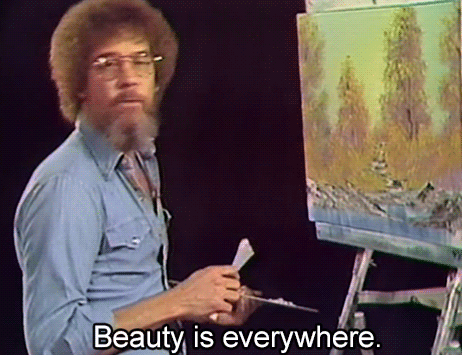
Very briefly that is defined as:
"Public Art is Artwork in the public realm, regardless of whether it is situated on public or private property, or whether it is acquired through public or private funding. Public art can be a sculpture, mural, manhole cover, paving pattern, lighting, seating, building facade, kiosk, gate, fountain, play equipment, engraving, carving, fresco, mobile, collage, mosaic, bas-relief, tapestry, photograph, drawing, or earthwork" -Jack Becker Monograph 2004
Public art is a way to beautify your spaces, express the unique aspects of your community and express the different culture and values of the people who live all around you. It can Commemorate events, people, or important groups that and their impacts to society. However, as with all art, you can't avoid controversy. Whether it be from who paid for the installation, to the subject matter. From proper representation, to where the piece is placed. What medium is used in its creation, or who the artist is. All of these things can lead to communities having a strong backlash to artistic pieces being displayed and some even turn to violent outbursts against the art or even their creators.
This is a list today I would like to discuss some controversial public art pieces. Maybe I will go more in depth about some of them later, but these are some big ones that stick in the public conscious today.
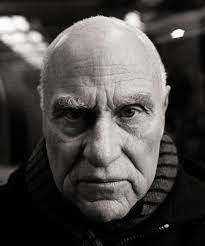
Richard Serra's Tilted Arc



This is a 12 foot tall, 120 foot long tiled steal plate that ran through Manhattan's federal plaza from 1981 to 1989. This wall forced people to take an inconvenient route through the plaza for most of the 80's. The goal of the piece was to inspire the viewer to become aware of themselves and their movement through the plaza, but it caused an imposition on government workers. The piece had a lot of support of modern artists,but by 1985 there was a hearing to remove the Arc and a court voted 4-1 to remove it. Due to the artists insistence that it never be displayed again it is now in government storage.

How Ya Like Me Now? by David Hammond


Painted in 1988 and commissioned by the Washington Project for the Arts for an exhibition on black culture and modernism this 14 foot by 16 foot billboard was poorly received to say the least. Local youths did not connect with the artists intended message of how popular culture was co-opting and commodifying black identity and whitewashing it. They interpreted it as racist so they tore the display down with sledgehammers. The piece was later reinstalled with the sledgehammers as part of the final piece incorporating the vandalism and backlash into the final work only this time it is inside the gallery and not on a street corner across from the National Portrait Gallery in D.C.

Just kidding , I couldn't find a good artist photo
Traffic Light Tree by Pierre Vivant
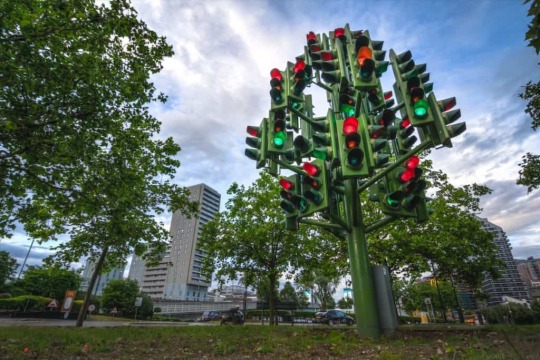
A sculpture originally located in Canary Wharf London in 1998 after a competition run by the Public Art Commissions Agency. It was moved to Billingsgate Market. It stands at 8 meters or 26.24 feet tall and has 75 sets of traffic lights. Vivant stated that it was to represent adjacent plane tree and the restless rhythm of the city. It was installed to replace a dying plane tree in the center of a roundabout, but the controversy arose when motorist confused the installation as an actual traffic light. Despite the initial controversy it has won over the city and is now viewed as one of the most pleasing roundabouts, although it still does cause confusion with tourists.

Martin Luther King Jr. Memorial by Lei Yixin


Built in 2011 this sculpture was controversial from start to finish. Recognized as a master sculptor in China and having sculpted monuments that included the communist leader Mao Zedong, his appointment to sculpt the Dr King statue was protested due to members of human rights organizations decrying the appointment of his visual support of the CCP. Others felt that the statue should have been done by an African American artist. They disliked the use of Chinese granite and not American granite. The quote engraved on the side was abridged in a way that changed the meaning and upset many, to the point where a year later it was removed to now only show abstract striations.

Tree by Paul McCarthy
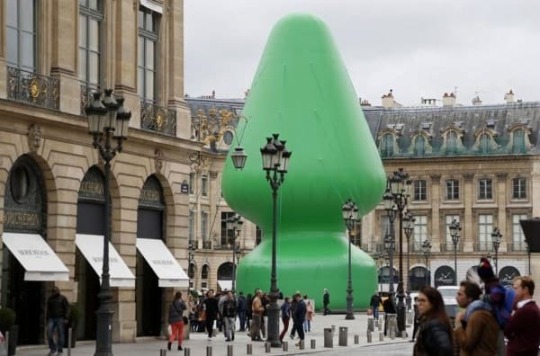
Displayed in October 2014 at the International Fair of Contemporary Art in Palace Vendôme in Paris this abstraction of a Tree in a reminiscent way of a modern impressionist was a 24 meter or 78.74 foot tall green canvas butt plug shape because he thought they looked similar to trees so he created it as a tree abstraction. He was actually assaulted by someone while installing it, and it was destroyed two days later because some people thought it was offensive to children.
Tree was displayed again in 2016 at Paramount Ranch 3 and it was well received by visitors.
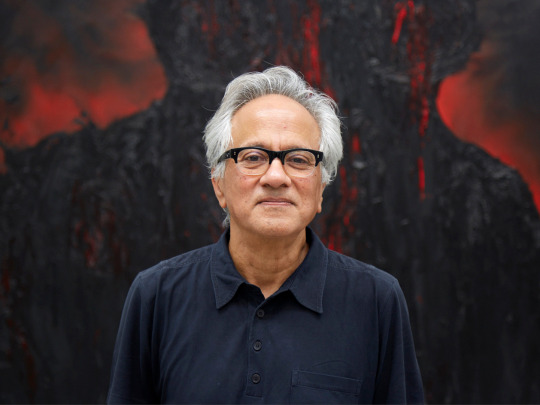
Dirty Corner by Anish Kapoor


I feel a list of modern controversial art wouldn't be complete without Anish Kapoor, but my feelings are not why he is on the list. It is because he is a controversial artist. All his controversies deserve a post of their own, so only one is on this list.
This art piece was created in 2011, but when it was brought to the Palace of Versailies in 2015 is when it hit its peak. The 60 meter (196.85ft) long and 8 meter(26.25ft) tall cone was described by Kapoor as "the vagina of a queen who was taking power". Critics hated the sexual nature and its nickname is "the Queen's Vagina."
The idea was to enter the cone shaped piece and loose your perception of space the deeper you went into it. People vandalized the piece with antisemitic slurs as Kapoor's mother is Jewish. After some legal fights and wanting to leave the vandalism as a statement to the horror and intolerance of humanity, he was ordered to cover or remove the vandalism. He chose to cover it with gold leaf as "a royal response" the piece is no longer on display in France.
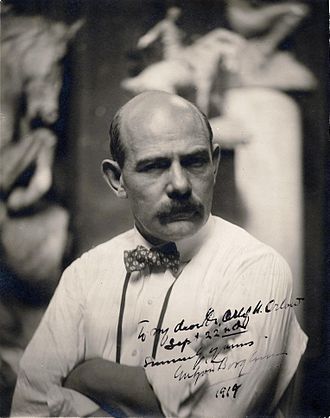
Mount Rushmore National Memorial by Gutzon Borglum


Sculpted from 1927 to 1941
This might be a controversial one to add for many Americans. But I wanted to focus on the 20th and 21st centuries and so I feel I would be remiss to not add this monument to America.
Carved in the Black Hills of South Dakota by a close friend of Teddy Roosevelt and known Klan associate. This monument to the greatness of American expansionism in the early 20th century is also a monument to how American presidents directly participated, through policy or active participation in the taking and desecration of Native American lands. The Black Hills are considered a Holy Site to the Lakota people, and in the Fort Laramine Treaty of 1868 it was considered exempt from white settlement forever. But gold was discovered so the treaty was violated. Where Mount Rushmore is located is also home to Custer State Park, named after an American general who actively participated in the violation of the Treaty. Mount Rushmore was meant to be a Monument to America's Greatness as embodied by our Presidents, but it at the same time is a symbol of our expansion, treaty violations, and exploitation of the land and people of this nation.
It remains a site of protest, the rock itself isn't great for carving and people think about adding more to it. The National Park service have dismissed the idea of altering it at all. People are divided about the site to this day. Some want it destroyed, some want to use it for education, but i have to say the National Park splash page doesn't help much with the education, and some just want the Lakota people to have their Holy Site back. The Lakota won a lawsuit for 17+million dollars, but they also just want the Land and not money as it is a holy site, and they continue to protest. The carving can not be undone, so the site remains a divisive reminder of American History that is often just a footnote in the education of most.
If you can think of any public artwork that you think is controversial please share it! Even if its just a public art work that someone has in their lawn that people in your community cant stand. Art should promote discussion, learning, and growth!
#art#public art#controversial#controversial art#anish kapoor#richard serra#david hammons#pierre vivant#paul mccarthy#lei yixin#gutzon borglum#art history#western art history
2 notes
·
View notes
Photo


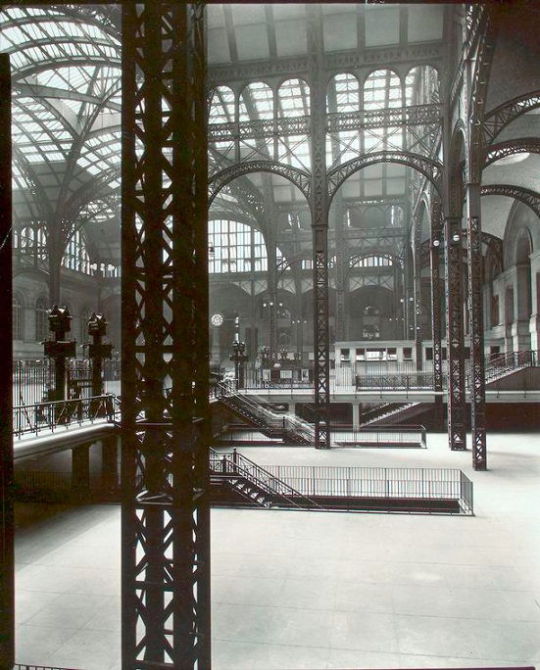
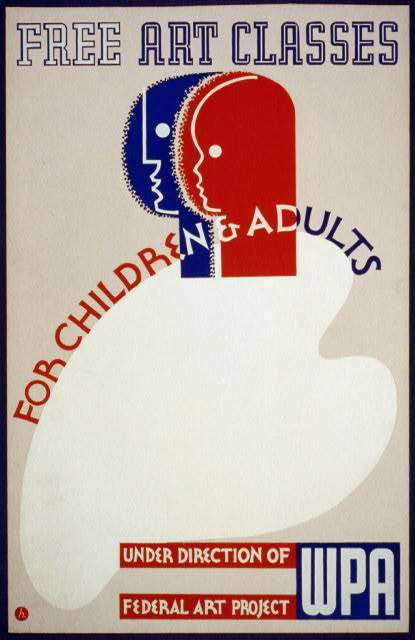

The Federal Art Project was a part of the New Deal which employed nearly 400 artists who collectively created over 100,000 works of art-- including paintings, prints, murals, photographs mosaics, sculptures, and more. The Federal Art Project also made art more accessible throughout the US by funding live theater and music and art classes throughout the country.
Federal Art Project of Works Progress Admin. The Art Story. (n.d.). Retrieved November 15, 2022, from https://www.theartstory.org/definition/federal-art-project-of-the-works-progress-administration/
Free art classes for children & adults under ... - library of Congress. (n.d.). Retrieved November 15, 2022, from https://www.loc.gov/resource/cph.3b49028/
National Archives and Records Administration. (n.d.). A New Deal for the Arts. National Archives and Records Administration. Retrieved November 15, 2022, from https://www.archives.gov/exhibits/new_deal_for_the_arts/#
11 notes
·
View notes